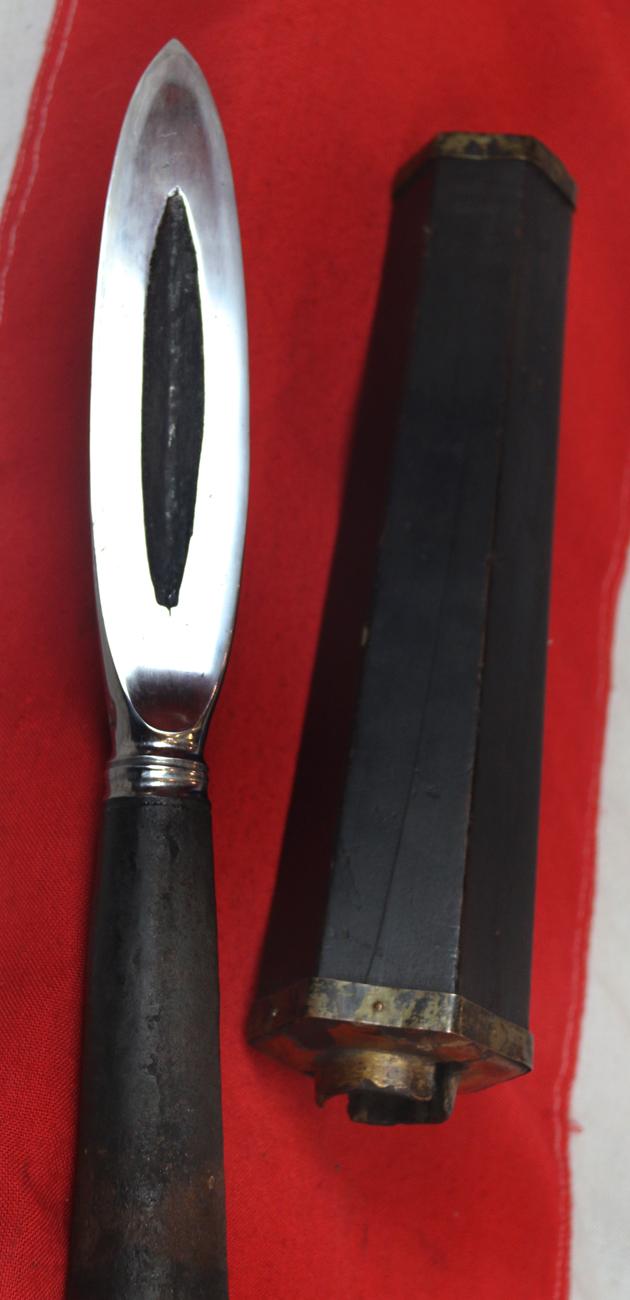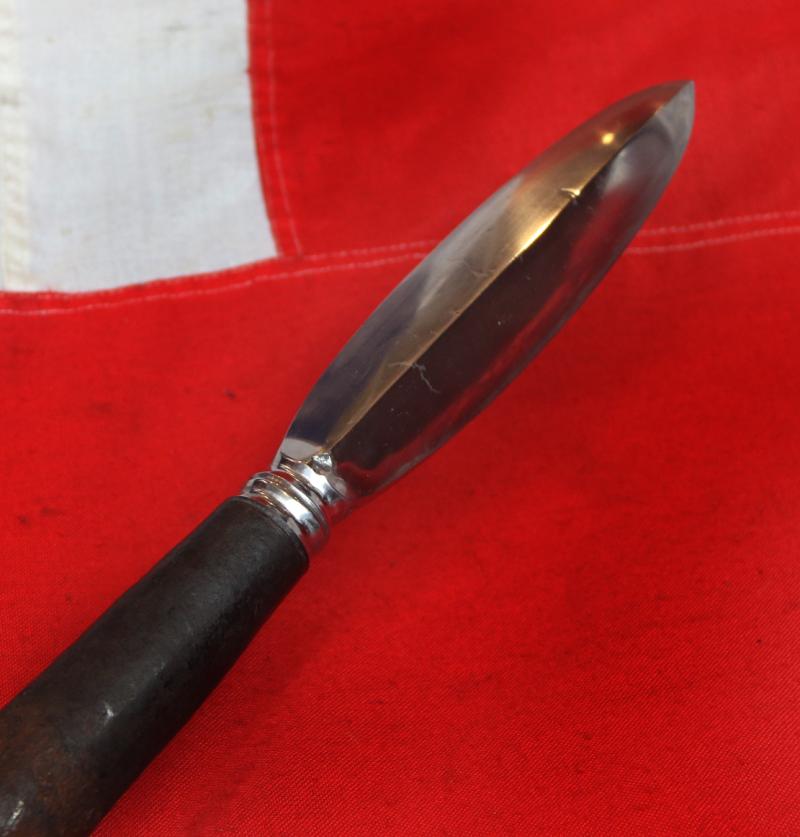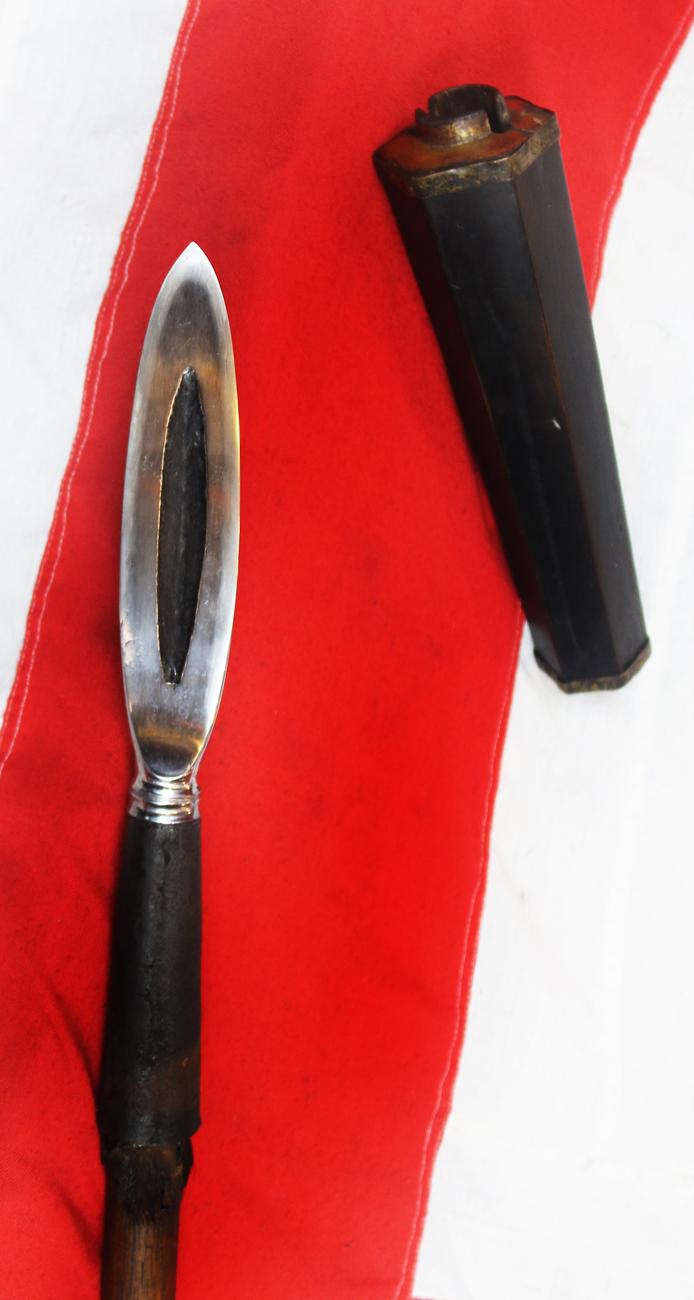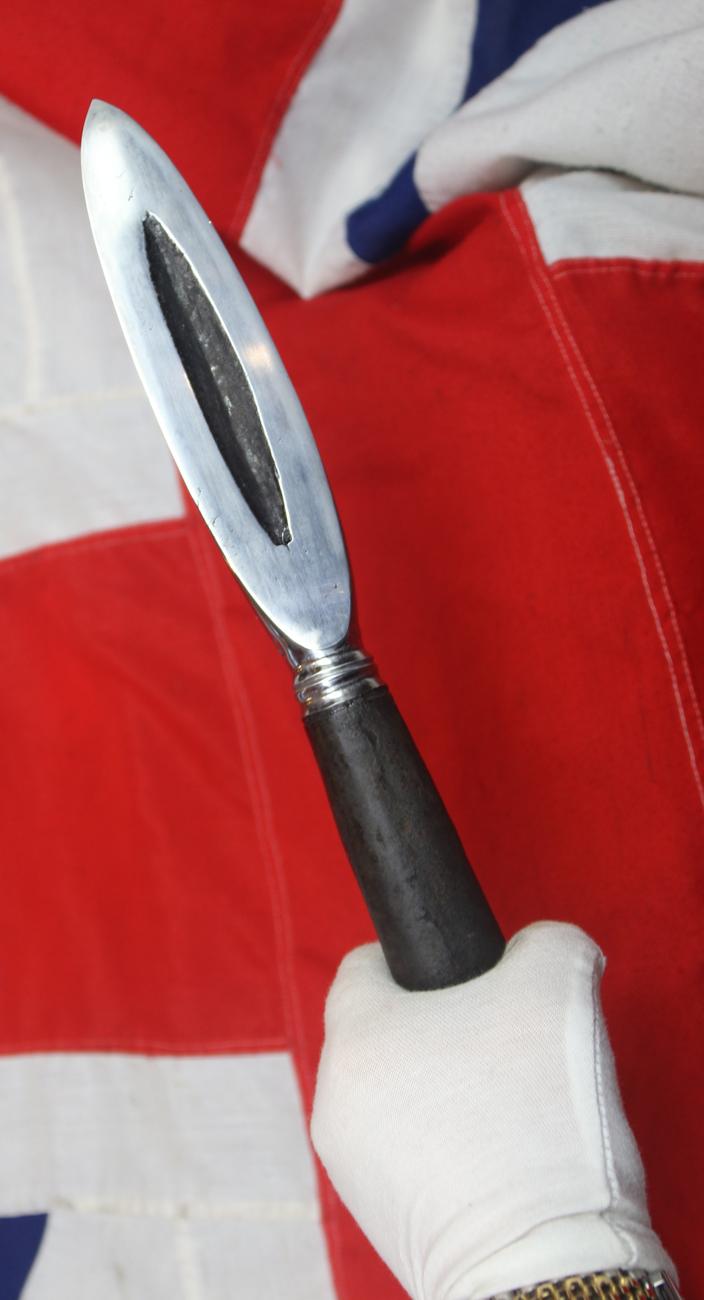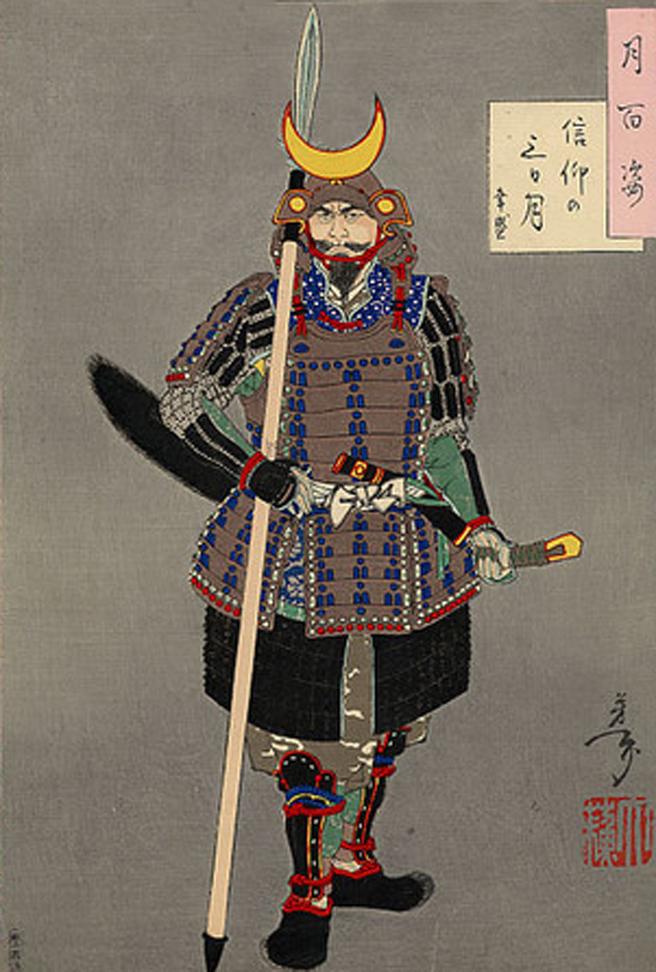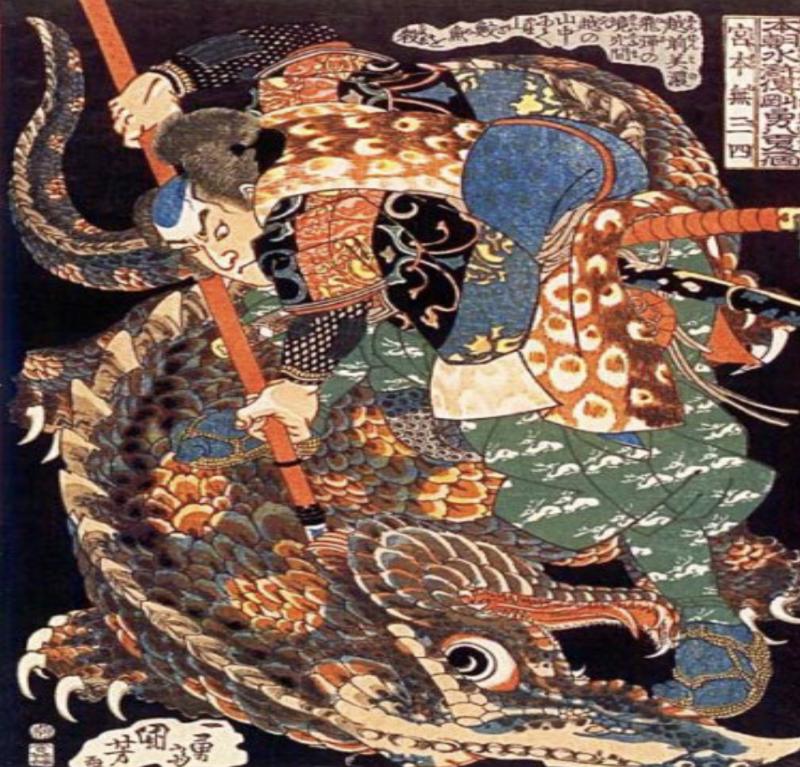A Fabulous, Early Japanese Samurai’s, Large & Incredibly Powerful Fukuro Yari, With a Sasaho ‘Bamboo Leaf’ Shaped Blade. A Close Combat Sojutsu Polearm Spear, With Rare Socket Head, Signed Kiyotsugu. Likely Echizen Koto, 1336 to 1575
A remarkable and most rare, early samurai’s close combat spear of incredible heft. One may possibly never see another of this size quite like it outside of a Japanese museum.
Formerly part of the Christopher Fox collection. Our late friend and colleague of over 30 years. The right hand man and dear friend of his sensei, the world famous, Roald Knutsen, England's foremost expert on samurai pole arm combat and their polearms, author of the seminal work, 'Japanese Spears Polearms and Their Use in Old Japan' { we have a 1st Edition copy for sale at present}.
The blade shown here is now re-polished, and now looks incredible as it originally did between 500 and 700 years ago. It shows wonderful grain, a lacquered carved horimono central scoop between the cutting edges, and at the rear side peak, near the top, you can see an amazing defensive blocking cut made by deflecting a samurai sword in close combat. It has the usual ancient small wear polishing lines.
The size, strength, weight and mass of such a yari spear-head a samurai could easily believe that with this polearm he was powerful enough to bring down a dragon. See the antique woodblock print in the gallery pictures of a samurai slaying a dragon with his very same form of fukuro yari. This is absolutely no regular size samurai fukuro-yari. It is well recognised that the form of socketed Fukuro yari is rare as the swordsmithing method of its creation is also very difficult indeed.
Muromachi period, 1336 to 1575, Its socket is signed Kiyotsugu.
A much larger and powerful and heavier leaf shaped blade than is usual, and as opposed to a long tang it has the earliest type of yari socket mount, in order to affix over the pole haft as opposed to the later style of within it. The yari has its original pole and iron foot mount, and blade saya cover.
The martial art of wielding the yari is called sojutsu. A yari on it's pole can range in length from one metre to upwards of six metres (almost 20 feet). The longer hafted versions were called omi no yari while shorter ones were known as mochi yari or tae yari. The longest hafted versions were carried by foot troops (ashigaru), while samurai usually carried a shorter hafted yari. Yari are believed to have been derived from Chinese spears, and while they were present in early Japan's history they did not become popular until the thirteenth century.The original warfare of the bushi was not a thing for "commoners"; it was a ritualized combat usually between two warriors who may challenge each other via horseback archery and sword duels. However, the attempted Mongol invasions of Japan in 1274 and 1281 changed Japanese weaponry and warfare. The Mongol-employed Chinese and Korean footmen wielded long pikes, fought in tight formation, and moved in large units to stave off cavalry. Polearms (including naginata and yari) were of much greater military use than swords, due to their much greater range, their lesser weight per unit length (though overall a polearm would be fairly hefty), and their great piercing ability. Swords in a full battle situation were therefore relegated to emergency sidearm status from the Heian through the Muromachi periods.
Honda Tadakatsu was famous as a master of one of The Three Great Spears of Japan, the Tonbokiri (蜻蛉切). One of The Three Great Spears of Japan, the Nihongō (ja:日本号) was treasured as a gift, and its ownership changed to Emperor Ogimachi, Shogun Ashikaga Yoshiaki, Oda Nobunaga, Toyotomi Hideyoshi, Fukushima Masanori, and so on, and has been handed down to the present day.
Print in the gallery "Samurai & Dragon" by Utagawa Kuniyoshi (1797-1861)
Print in the gallery of
Yamanaka Yukimori (1543-76), a samurai known for his great strength and loyalty, with his huge fukuro yari. He served the Amako warlord during a time in Japanese history referred to as "Sengoku," or "the country at war." By Tsukioka Yoshitoshi
Total head size, 32cm including mounting socket, edged blade size 18.5cm x 4cm at widest. Full length including haft and fitted saya blade cover 142cm
Code: 22920



